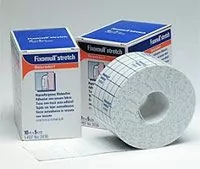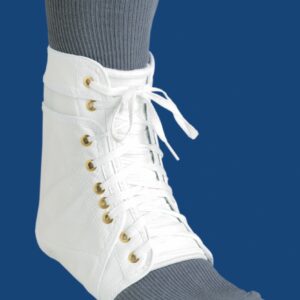Peroneal Tendon Rupture
Updated:
(Also known as a Completely Torn Peroneal Tendon)
What is a peroneal tendon rupture?
There are several muscles which lie on the outside of your lower leg and are collectively known as the peroneal muscles (figure 1). These originate from the outer lower leg bone (fibula) then travel down along the outside of your leg where they insert into various bones in the foot via the peroneal tendons (figure 1).
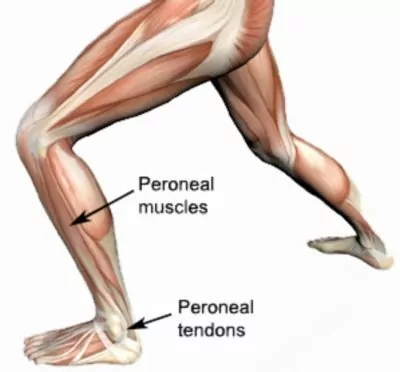
The peroneal muscles are responsible for moving the foot and ankle away from the midline of the body (eversion – figure 2). Whenever the peroneal muscles contract or are placed under stretch, tension is placed through the peroneal tendons. If this tension is excessive due to too much force or repetition, damage to the peroneal tendons may occur. This can range from minor tearing of the tendon with subsequent inflammation to a complete peroneal tendon rupture.
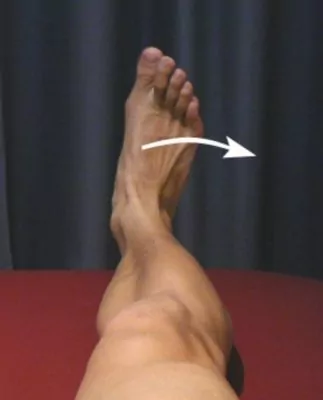
Cause of peroneal tendon rupture
Peroneal tendon rupture most commonly occurs traumatically during severe ankle sprains. The usual mechanism of injury is an excessive turning of the foot inwards (inversion) during weight bearing. This may occur during activities or sports requiring rapid changes in direction such as basketball, football, volleyball or netball on uneven surfaces or following an awkward landing from a jump or height.
Signs and symptoms of peroneal tendon rupture
Patients with this condition may notice an audible snap or tearing sound at the time of injury, with subsequent pain and swelling on the outside of the foot or ankle. They may be unable to weight bear at the time of injury and frequently develop bruising and stiffness over the coming days. Patients may also experience significant weakness on moving the foot and ankle away from the midline of the body (eversion – figure 2).
Diagnosis of peroneal tendon rupture
A thorough subjective and objective examination from a physiotherapist may be all that is necessary to diagnose a peroneal tendon rupture. Diagnosis may be confirmed with an MRI scan or ultrasound investigation.
Treatment for peroneal tendon rupture
All patients who potentially have a peroneal tendon rupture should see a physiotherapist or doctor immediately so their condition can be assessed and the likelihood of them having a ruptured peroneal tendon determined. This is important as delayed treatment may result in a poor outcome. The treating doctor or physiotherapist may refer for further investigation such as an MRI or ultrasound to assist with diagnosis. Patients who have a peroneal tendon rupture may be referred to a specialist for an opinion regarding the suitability of surgery. This may or may not be required to ensure an optimal outcome.
For all patients with this condition, whether managed conservatively or surgically, rehabilitation under direction by a physiotherapist is vital to ensure an optimal outcome. Patients should perform pain free flexibility, strengthening and balance exercises to restore normal function to the ankle. The treating physiotherapist can advise which exercises are most appropriate and when they should be commenced. In the final stages of rehabilitation, a gradual return to activity or sport should occur as guided by the treating practitioner.
-
 Premium Strapping Tape 38mm (Victor)$16.00 – $295.00
Premium Strapping Tape 38mm (Victor)$16.00 – $295.00 -
 AllCare Ortho Total Ankle Brace (AOA19)$55.00
AllCare Ortho Total Ankle Brace (AOA19)$55.00 -
 AllCare Instant Cold Pack (15 x 25cm)$15.00
AllCare Instant Cold Pack (15 x 25cm)$15.00 -
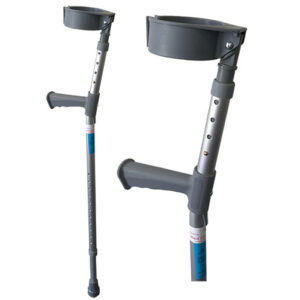 Forearm Crutches Adjustable – Standard Grip$59.00
Forearm Crutches Adjustable – Standard Grip$59.00
Physiotherapy for peroneal tendon rupture
Physiotherapy treatment is vital to hasten healing and ensure an optimal outcome in all patients with this condition. Treatment may comprise:
- soft tissue massage
- electrotherapy (e.g. ultrasound)
- anti-inflammatory advice
- stretches
- joint mobilization
- taping
- bracing
- the use of crutches
- ice or heat treatment
- exercises to improve flexibility, strength and balance
- education
- activity modification advice
- biomechanical correction
- footwear advice
- a gradual return to activity program
Find a Physio
Find a Physiotherapist in your local area who can treat this condition.
Ankle exercises
- View Ankle Stretches.
- View Ankle Strengthening Exercises.
- View Balance Exercises.
Physiotherapy products for peroneal tendon rupture
Some of the most commonly recommended products by physiotherapists for patients with this condition include:
To purchase physiotherapy products for peroneal tendon rupture click on one of the above links or visit the PhysioAdvisor Shop.

Link to this Page
If you would like to link to this article on your website, simply copy the code below and add it to your page:
<a href="https://physioadvisor.com.au/injuries/ankle/peroneal-tendon-rupture”>Peroneal Tendon Rupture – PhysioAdvisor.com</a><br/>PhysioAdvisor offers detailed physiotherapy advice peroneal tendon rupture including: symptoms, causes, diagnosis, treatment, physiotherapy products and more...
Return to the top of Peroneal Tendon Rupture.



